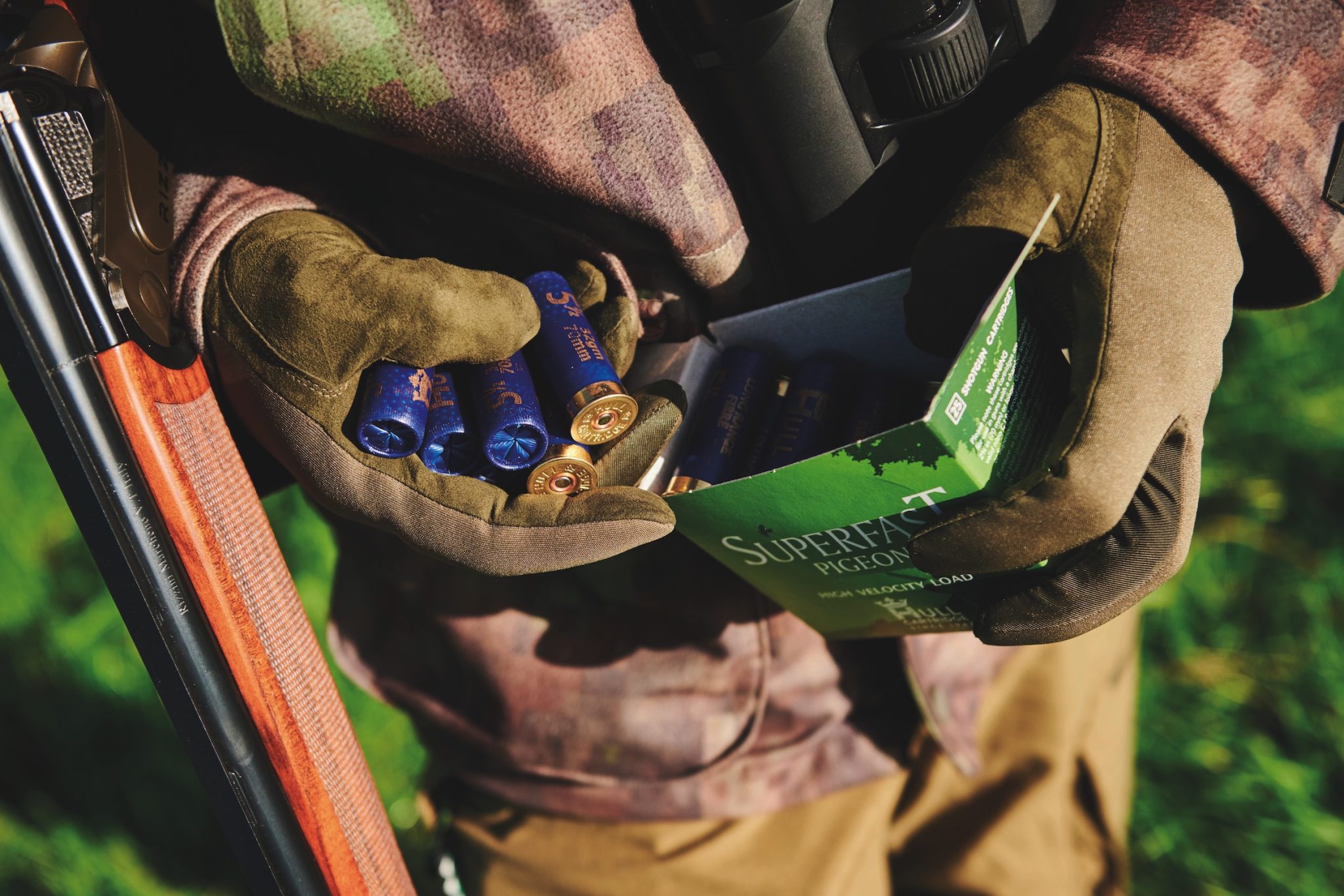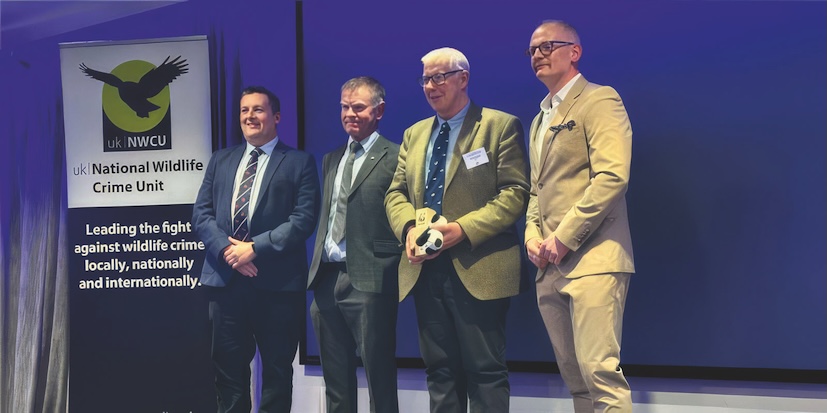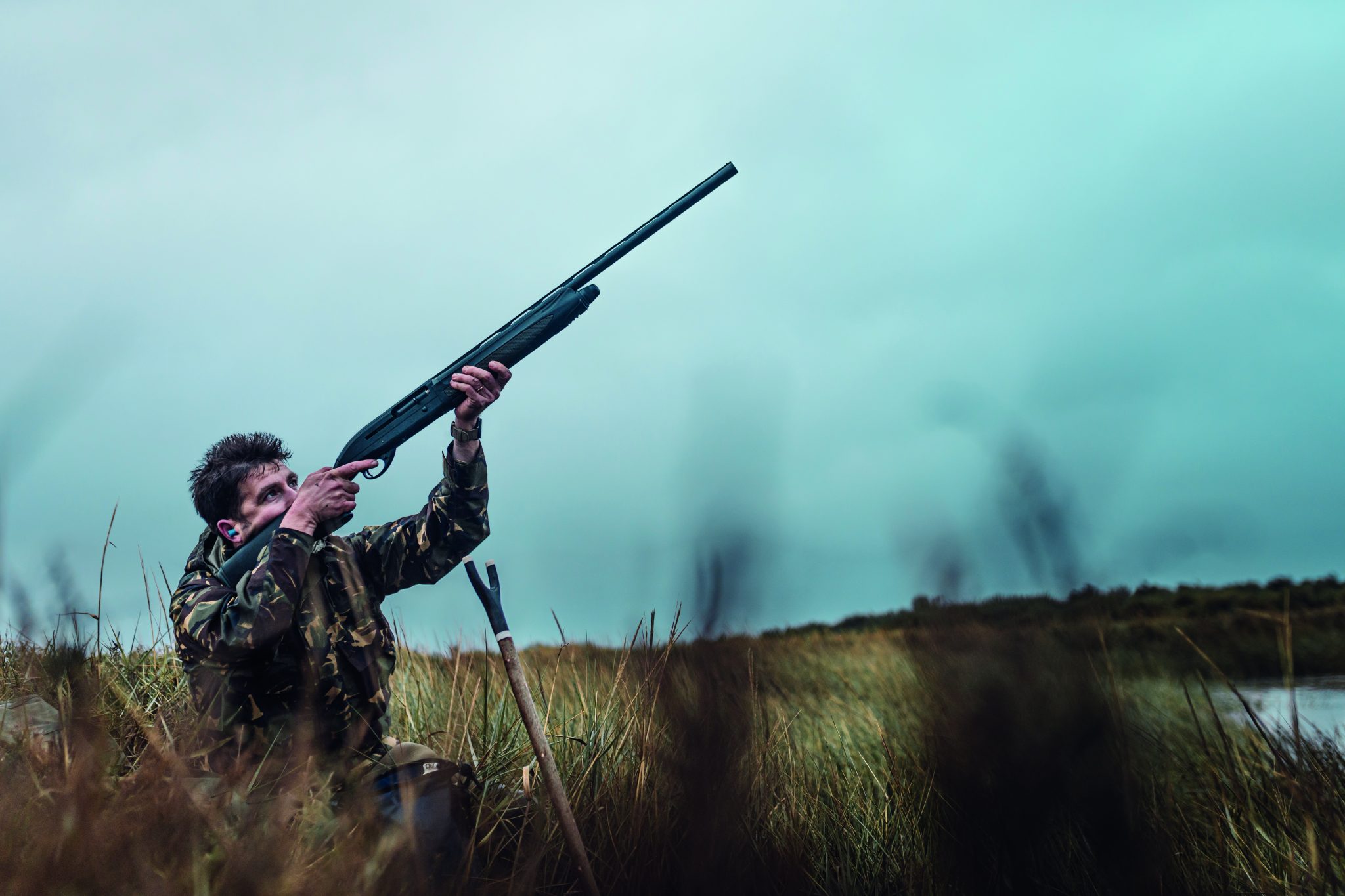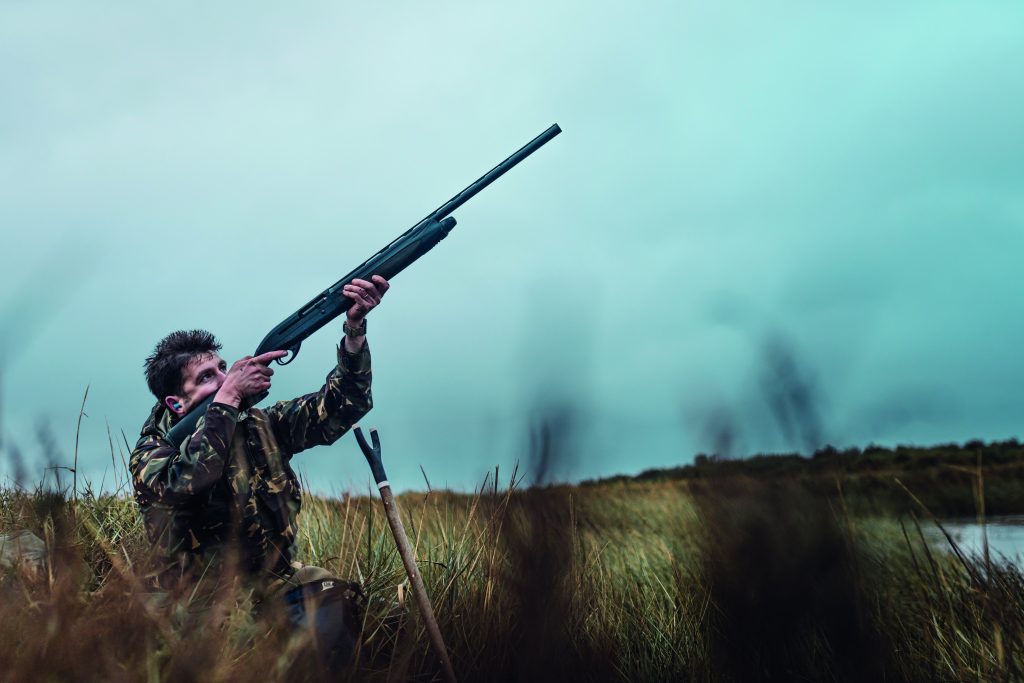Win CENS ProFlex DX5 earplugs worth £1,149 – enter here
Why shooting should stay in the shadows
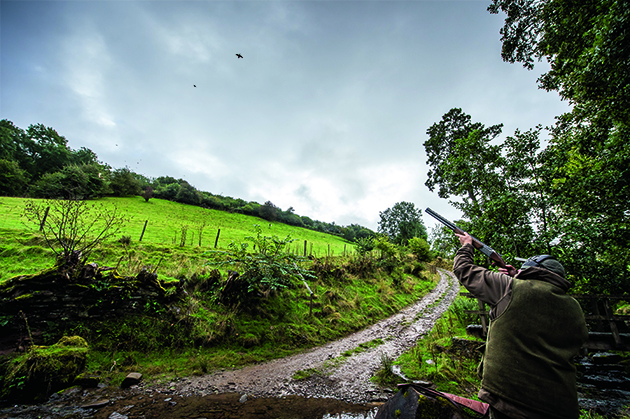 Andy Matthews
Usd 22 april 20 media
Andy Matthews
Usd 22 april 20 media
There is a concept very much in fashion in Westminster, where I occasionally work as a journalist, known as the “dead cat strategy”.
It works something like this: let’s suppose you’re at a dinner party, debating a topic in which the facts are almost entirely against you. Logic dictates that the longer this conversation continues, the more certain you are to lose the argument. So instead of continuing to talk, you decide to suddenly plonk a dead cat on to the dining table.
Now all anyone is saying is: “Crikey, that’s a dead cat!”
In other words, people have stopped thinking about the subject that was giving you so much grief and are instead obsessed with something new: a dead cat. They might very well be alarmed, disgusted and even traumatised at this development, but you have successfully ended a debate that you were otherwise bound to lose.
Dead cat strategies are simple, but can be highly effective. Perhaps the most famous, in recent years, involved the red bus that Boris Johnson unveiled during the 2016 Brexit referendum. It claimed that the UK sends £350million a week to the EU that could otherwise be spent on the NHS. The actual amount was nearer £180million. By using an inflated figure — which was guaranteed to be disputed — he created a distraction from other niggly debates. The nation instead spent weeks arguing about which gargantuan sum was actually sent to Brussels. For Boris, that worked out rather well.
Now opponents of shooting have also, in recent years, become very good at using dead cats — in some cases quite literally.
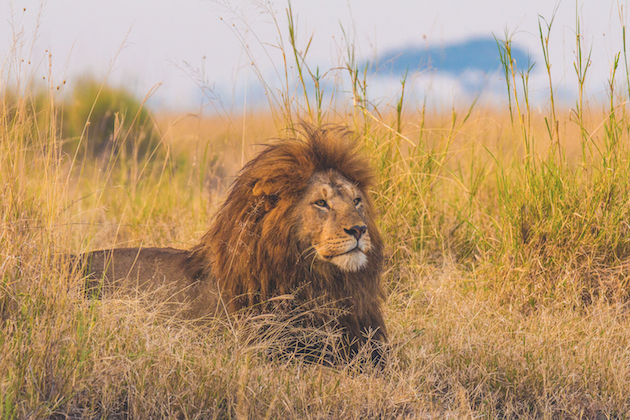
There are arguments for big game hunting but the debate is too emotional
Provoking outrage
Take, for example, the thorny topic of big game hunting. On almost every level, we know that it’s one of the best tools available not only to finance the protection of valuable wilderness in sub-Saharan Africa, but also to sustain populations of several critically endangered species. Facts and logic are, in other words, entirely on its side. But present Joe Public with a picture of an American dentist posing next to a dead lion, and those facts and logic immediately dissolve into frothing outrage.
For grouse shooting, the dead cat tends to be a picture of a golden eagle that looks like it’s been poisoned, or a deceased hen harrier. These are typically posted — with or without any meaningful verification or context — to the Twitter feed of notable eco-celebs. They know full well that, when they dig out one of those images, nuanced debate about heather maintenance, predator control and lapwing conservation on upland grouse moors are lost in the noise.
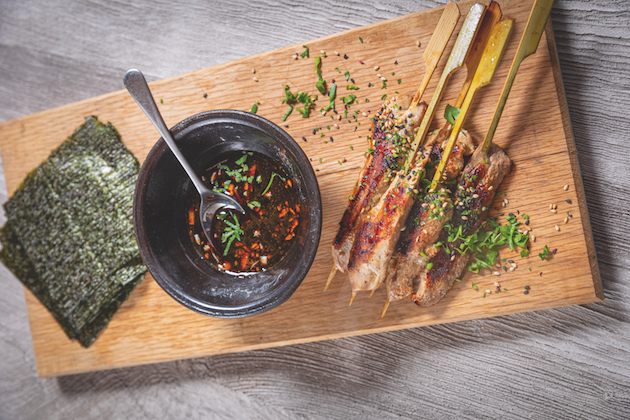
Proponents of shooting must stress the vital role the sport plays in the national food chain
I’m not saying any of this is right, but these are the facts that shooting must deal with. All of which brings me to a wider point: as a full-time Fleet Street journalist who happens to shoot and fish and has very occasionally ridden to hounds, I am frequently asked for advice on how country sports might ‘win’ the battle for hearts and minds being played out daily in the so-called mainstream media.
Often, such questions come from a companion who is fuming at the injustice of an egregiously biased or ignorant article in a national newspaper. Perhaps something about big game hunting, maybe a shabby piece of fake news in the Telegraph alleging British shooting enthusiasts are travelling to Iceland to “trophy-hunt” puffins. “Why does the press hate us?” they ask.
I generally have two responses.
First, it’s a huge mistake to think that journalists are biased against shooting, or that my trade is the exclusive preserve of metropolitan antis. I know at least a dozen colleagues, across several national titles, who regularly shoot. And I know the same number again of senior newspaper executives who frequently take guns on far grander shoots than I can afford.
I would, in fact, hazard that journalists are, on the whole, far more likely to shoot than regular Britons. In other words, they’re natural allies. Secondly, and far more importantly, it’s quite wrong to think that country sports as a whole, and shooting in particular, need to ‘win’ the media in the first place. In many ways, the very best PR for shooting is actually to have no PR at all.
I believe fieldsports shouldn’t want to be written about very much in the first place.
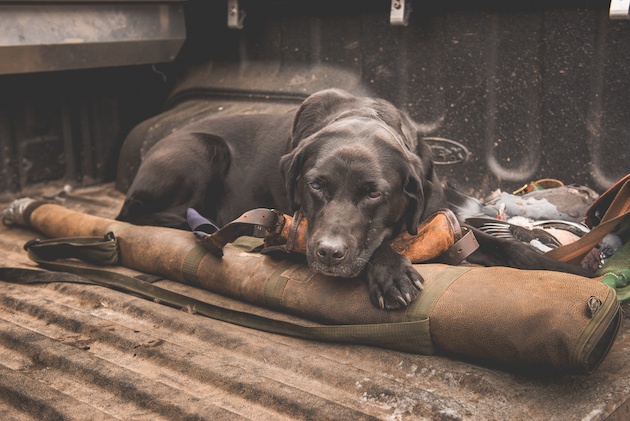
The nation’s affection for dogs helps the shooting lobby
Do the maths
The reason is basic: most people, in the normal run of things, couldn’t care less about the subject of this fine magazine. How do we know that? Elementary mathematics.
There are, give or take, around 600,000 people who shoot in the UK — roughly 580,000 people have shotgun or firearm certificates. We can assume they are strongly pro shooting.
In the anti column, the League Against Cruel Sports has an annual income of around £250,000, and membership costs £24. It has around 10,000 members. The RSPCA boasts two or three times that number. So perhaps 40,000 Britons are very strongly opposed to shooting.
These people, at competing ends of a divisive debate, can be quite noisy. But in the grand scheme of things, there’s not a lot of them: the population of Britain is 70million. That means around 69million people, or 98.5% of the country, aren’t particularly interested in shooting.
Odd, I know. But this lot, known in the trade as the silent majority, aren’t going be interested in reading positive articles about shooting. They don’t care about conservation headlands, or how many acres of cover crop you might have planted last autumn. They are only vaguely bothered about the nuances of conserving birds, though they do quite like seeing and hearing them. So newspaper editors aren’t going to start commissioning worthy articles about such matters. Unfair, but that’s reality.
Lack of interest
Most Britons aren’t even very interested in what sort of metal you stuff down the barrels of your 12-bore, which is why the recent calls by BASC and others for lead shot to be phased out — the biggest news story in shooting for years – were almost completely ignored by Fleet Street, generating the sum total of 800 words on the Guardian’s website and 400 words on page 12 of the Times. The rationale for phasing out lead is, I suspect, to avoid bad headlines in future rather than to get sympathetic ones now.
Another common misconception is that a few celebrity endorsements might generate positive news coverage. We know, for example, that David Beckham shoots partridges. But in the hugely unlikely event that he might speak up in defence of his hobby, it would simply provoke a public debate about the ethics of killing birds for sport. As we know, such debates are rarely informed by facts, or evidence, but instead hinge on mawkish sentimentality. When that happens, shooting loses the popular debate.
What everyday people really are going to care about, however, are the occasional “dead cats” that are chucked into the news agenda.
By that, I mean news stories illustrated by a photo of someone next to, say, a dead giraffe. These are guaranteed to tug at Middle England’s heartstrings. In the vernacular of my trade, that makes them “good copy”. Rightly or wrongly, they are therefore bad PR for shooting. Equally, pictures of dead birds and animals generally are, to normal people, quite provocative. So you can take it as read that any article illustrated by them is going to be a win for your opponents.
It follows that we shouldn’t bother seeking out much coverage for shooting, and should certainly steer clear of any public discussion about big game hunting. That PR battle cannot be won, and even fighting it damages all shooting. Anyone asked to write a newspaper comment piece defending the safari trade should politely decline. Instead, we must allow this particular battle to be fought behind the scenes, by lobbyists and lawyers, who can leverage facts and evidence in courts or legislative forums.
The shooting community must also avoid providing its opponents with endless “dead cats”. Gamekeepers must not, under any circumstances, persecute birds of prey. Heather must never be allowed to burn out of control. Guns should boycott all shoots who fail to adhere to the Code of Good Shooting Practice. Every single gamebird shot for sport must enter the food chain. But as sensible people, you already know that.
In some circumstances, we can even leverage “dead cats” of our own. For example, pictures of dead lambs, with eyes pecked out by corvids, were the hook for several extensive articles — including one in the newspaper I write for — about the lunatic excesses of the anti-shooting fraternity during the general licence fiasco.
Puffins
Shooting must also play hardball when Fleet Street titles, or broadcasters, make egregious errors of fact. The aforementioned Telegraph story about puffins is, I am told, currently the subject of a complaint to IPSO, the Press regulator, by the Countryside Alliance. The outcome remains uncertain, but pursuing it was the right call.
Finally, the long-term future of our sport may hinge either on its role in the food chain — anyone who has eaten venison or pheasant is a potential friend — or the British public’s natural affection for dogs.
What must, at all costs, be avoided is a repeat of the fox hunting debate of the 1990s, when too many of the sport’s supporters went around arguing that hunting with hounds was the most ethical way to kill a fox. They were right, of course, but that didn’t matter: all the public heard was people talk of killing foxes. So, whatever the rights and wrongs, hunting was guaranteed to lose that argument.
To some extent, the best PR is therefore no PR at all. The future of shooting is all about ensuring that the public stays neutral. In other words, keep your head down and don’t mess up.
Related Articles
Get the latest news delivered direct to your door
Subscribe to Shooting Times & Country
Discover the ultimate companion for field sports enthusiasts with Shooting Times & Country Magazine, the UK’s leading weekly publication that has been at the forefront of shooting culture since 1882. Subscribers gain access to expert tips, comprehensive gear reviews, seasonal advice and a vibrant community of like-minded shooters.
Save on shop price when you subscribe with weekly issues featuring in-depth articles on gundog training, exclusive member offers and access to the digital back issue library. A Shooting Times & Country subscription is more than a magazine, don’t just read about the countryside; immerse yourself in its most authoritative and engaging publication.



